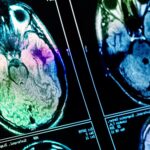A new study published in Current Biology has opened an exciting frontier in the treatment of post-traumatic stress disorder (PTSD) by leveraging the power of sleep. For the first time, researchers have shown that reactivating memories modified by therapy during sleep can lead to more significant brain activity related to memory processing, potentially reducing PTSD symptoms.
Current treatments for PTSD, such as exposure-based therapies, are not always effective. Up to 50% of patients do not respond well to these treatments, and many find the process emotionally draining, leading to high dropout rates. Recognizing the need for new strategies, researchers led by Hein van Marle at Amsterdam University Medical Center sought to explore whether sleep, a natural process essential for memory consolidation, could be harnessed to boost the effectiveness of PTSD therapies.
“Our goal is to unlock sleep as a new treatment window for PTSD,” van Marle explained. “This is the first proof of concept for potentially enhancing daytime treatment effects during sleep.”
The idea stems from the brain’s unique activity during sleep. When we sleep, our brain replays and processes memories, strengthening them for long-term storage. This process, known as memory consolidation, is crucial for integrating new memories into existing networks and reducing their emotional impact.
Previous research has demonstrated that memories associated with specific sensory cues, like sounds or smells, can be enhanced by reintroducing those cues during sleep—a technique called targeted memory reactivation (TMR). This study applied TMR to PTSD patients, aiming to strengthen the therapeutic effects of eye movement desensitization and reprocessing (EMDR), a common PTSD treatment.
The study involved 33 patients diagnosed with PTSD, all of whom were recruited from mental health institutions in the Netherlands. The participants were divided into two groups: a TMR group, which received memory reactivation cues during sleep, and a sham group, which did not receive these cues.
Before the intervention, participants underwent baseline assessments, including evaluations of PTSD symptom severity and functional MRI (fMRI) scans during a script-driven imagery task. This task involved patients listening to personalized scripts describing their traumatic memories while imagining the event in vivid detail.
The evening before the sleep intervention, all participants received a single session of EMDR, during which they were guided through their traumatic memories while making lateral eye movements and listening to auditory clicks. These clicks were then used as memory reactivation cues during the subsequent night’s sleep for the TMR group. The researchers used a neurostimulation method to time the delivery of these cues to coincide with specific phases of slow-wave sleep, a stage of deep sleep crucial for memory consolidation.
During the night, the researchers monitored the participants’ brain activity using high-density electroencephalography (EEG), which allowed them to track the effects of TMR on sleep-related brain activity. The following morning, and again one week later, the participants’ PTSD symptoms were reassessed using the same measures as before the intervention.
The TMR group showed a greater reduction in avoidance — a key symptom of PTSD — during the script-driven imagery task, compared to the sham group. Avoidance behaviors, such as avoiding thoughts, feelings, or conversations about the traumatic event, are significant barriers to recovery in PTSD. Reducing these behaviors is crucial for the success of exposure-based therapies. The TMR group also exhibited enhanced brain activity related to memory consolidation during sleep, particularly in the slow-wave sleep phase.
Interestingly, the study found that the extent of brain activity changes induced by TMR correlated with the degree of PTSD symptom reduction. Specifically, patients who showed greater changes in slow oscillations and sleep spindle activity — a type of brain wave associated with memory consolidation — during sleep also experienced more significant reductions in PTSD symptoms. This finding suggests that the enhancements in sleep-related brain activity were indeed linked to the therapeutic effects of TMR.
However, the study did not find significant differences between the TMR and sham groups in overall PTSD symptom severity or in other measures such as the frequency of traumatic memory intrusions or nightmares. This suggests that while TMR had a measurable impact on specific symptoms like avoidance, its effects on broader PTSD symptoms were more modest.
“During the night of TMR stimulation, we saw that presenting the EMDR clicks effectively enhanced the sleep physiology responsible for memory consolidation, with more enhancement leading to more significant reductions in symptoms. But the stimulation during our experiment wasn’t enough to produce differences in most clinical outcomes, partly because the EMDR session was already quite effective,” Van Marle said.
While the study’s findings are encouraging, they come with some important limitations. First, the sample size was relatively small, which may limit the generalizability of the results. Larger studies are needed to confirm the findings and explore the full potential of TMR in PTSD treatment. Second, the study only assessed the effects of a single EMDR session followed by one night of TMR.
The researchers plan to administer TMR treatment to patients over five consecutive nights in a follow-up experiment slated to begin this fall. They aim to determine whether repeated TMR sessions will lead to a more pronounced reduction in PTSD symptoms.
“The sleep and memory field has been wary to apply TMR in PTSD patients. We are really happy to see that TMR has no negative effects on these patients,” Van Marle said. None of the patients reported more nightmares or worsened sleep after TMR. “This gives us more confidence in applying it more frequently in our future work.”
The study, “Targeted memory reactivation to augment treatment in post-traumatic stress disorder,” was authored by Anna C. van der Heijden, Ysbrand D. van der Werf, Odile A. van den Heuvel, Lucia M. Talamini, and Hein J.F. van Marle.




